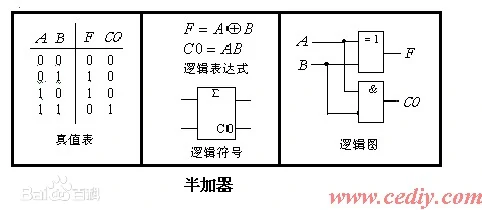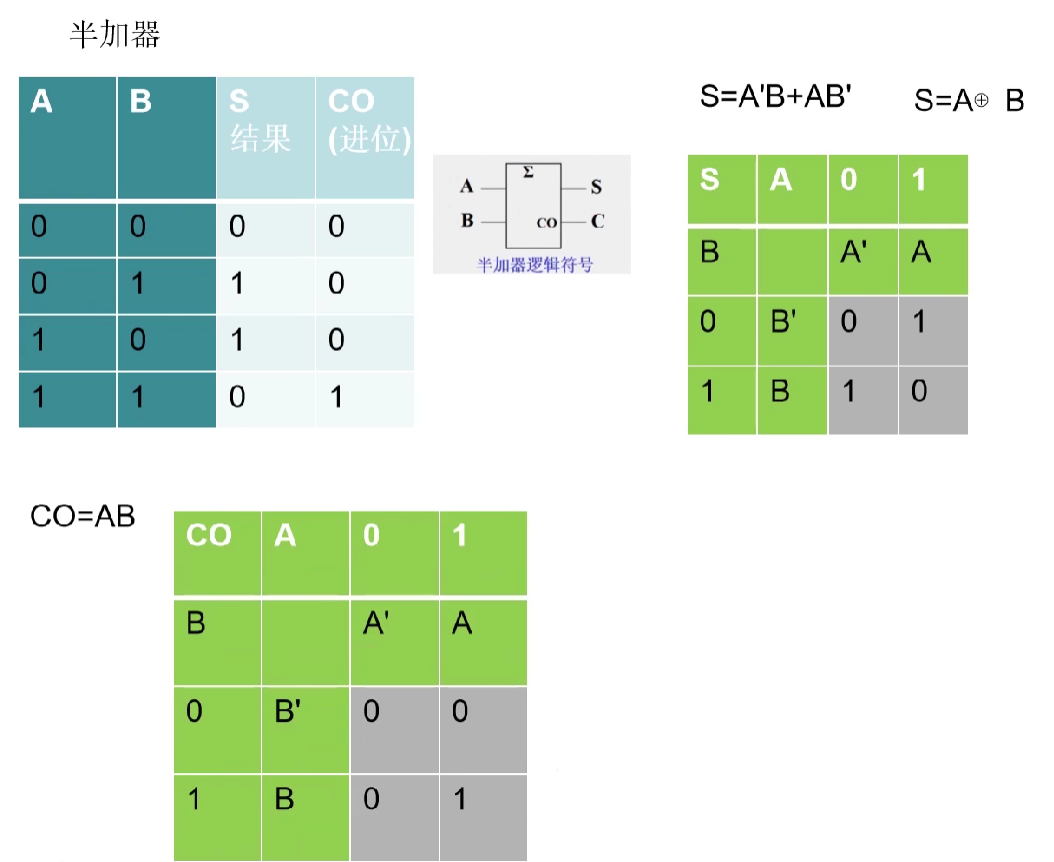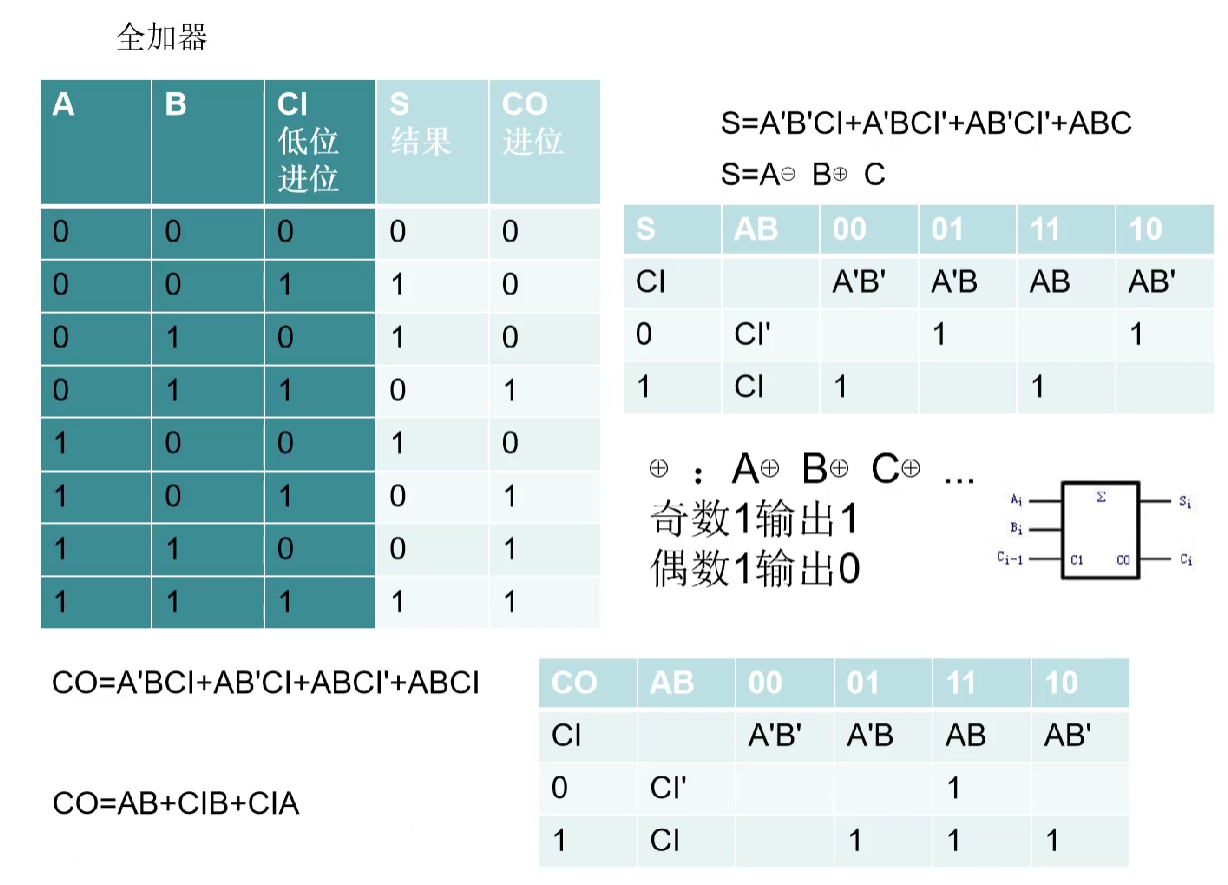当前位置:网站首页>Part III Verilog enterprise real topic of "Niuke brush Verilog"
Part III Verilog enterprise real topic of "Niuke brush Verilog"
2022-07-05 23:34:00 【Trip of Jie】
Preface
Previously brushed HDLbits The title above , Click the link to view the detailed notes :verilog practice :hdlbits The website series is over !
Recently, I want to brush the title of Niuke , You can click the link to brush the questions with Xiaobian : Niu Ke brush questions
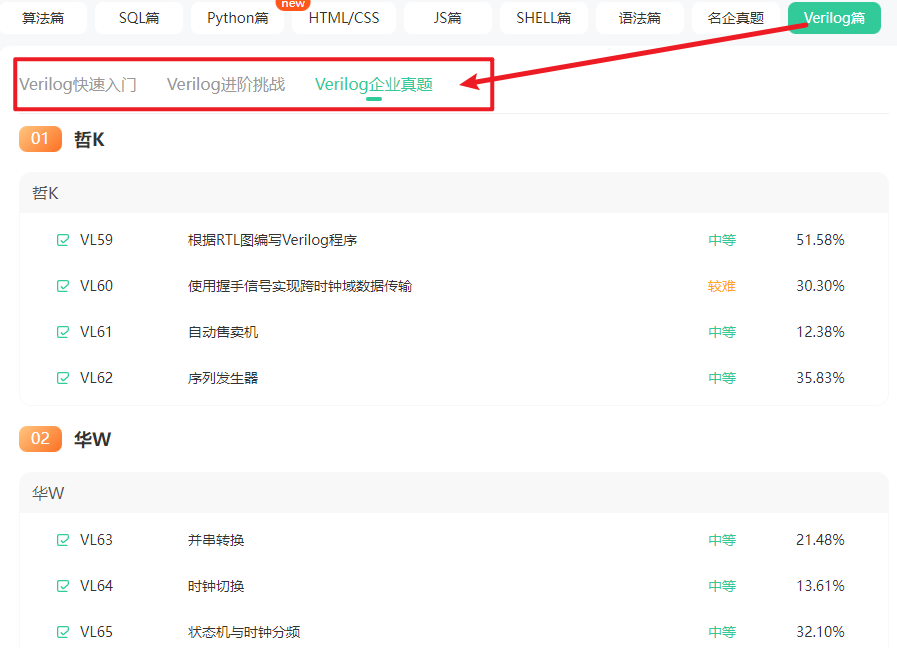
I don't know , If there is anything wrong in the text , You can communicate with each other in comments . The topic here is recommended to see the comment area of Niuke , One more word , Pay attention to accumulate your basic skills
Algorithm 、 Design patterns 、 Software etc.
Part I Verilog Quick start
- If you want to Introduction learning , You can click on the link :《 Niuke brush verilog》Part I Verilog Quick start
Part II Verilog Advanced challenges
- If you want to Advanced learning , You can click on the link :《 Niuke brush verilog》Part II Verilog Advanced challenges
Part III Verilog Enterprise truth
01 Zhe K
VL59 according to RTL Drawing compilation Verilog Program
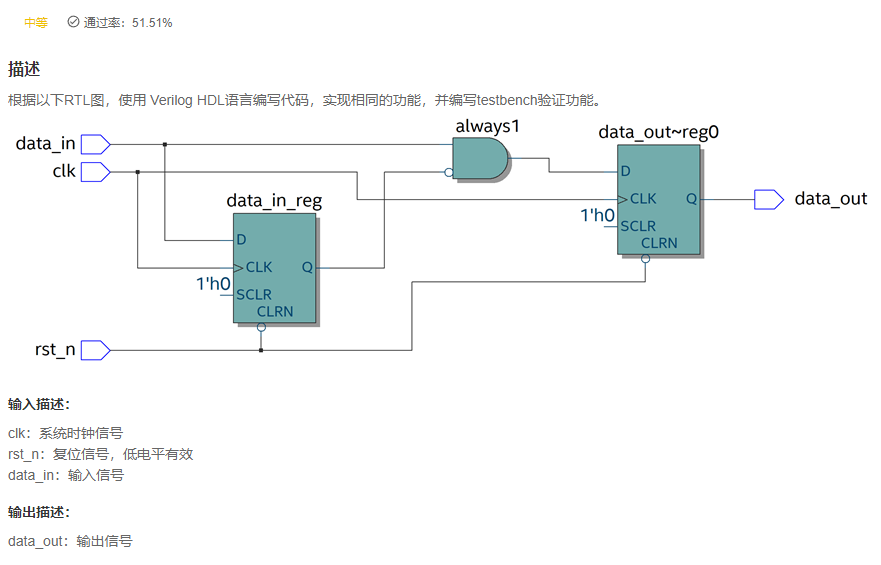
answer
`timescale 1ns/1ns
module RTL(
input clk,
input rst_n,
input data_in,
output reg data_out
);
reg data_in_reg;
[email protected](posedge clk or negedge rst_n) begin
if(!rst_n)begin
data_in_reg <= 'd0;
end else begin
data_in_reg <= data_in;
end
end
assign always1 = data_in & ~data_in_reg;
[email protected](posedge clk or negedge rst_n) begin
if(!rst_n)begin
data_out <= 'd0;
end else begin
data_out <= always1;
end
end
endmodule

VL60 Use handshake signal to realize cross clock domain data transmission
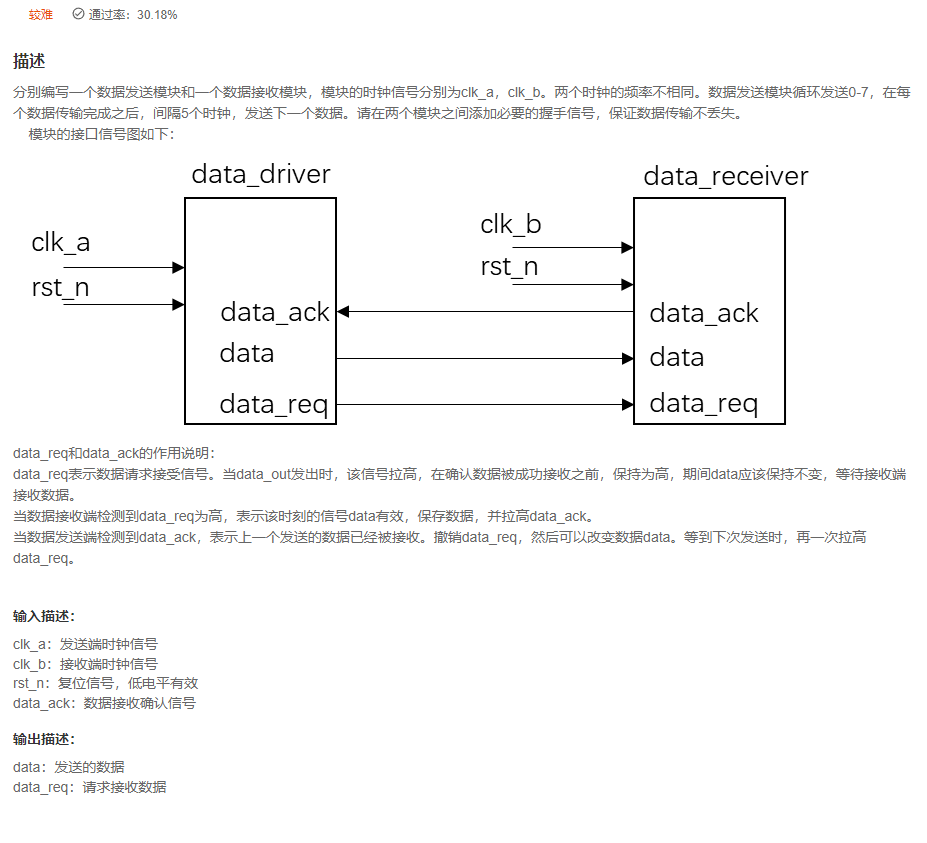
answer
`timescale 1ns/1ns
module data_driver(
input clk_a,
input rst_n,
input data_ack,
output reg [3:0]data,
output reg data_req
);
reg data_ack_reg_1,data_ack_reg_2;
always @ (posedge clk_a or negedge rst_n)
if (!rst_n)
begin
{
data_ack_reg_1,data_ack_reg_2} <= 'd0;
end
else
begin
{
data_ack_reg_1,data_ack_reg_2} <= {
data_ack,data_ack_reg_1};
end
// wire flag = data_ack_reg_1 && !data_ack_reg_2;
wire flag = {
data_ack_reg_1,data_ack_reg_2} == 2'b10;
always @ (posedge clk_a or negedge rst_n)
if (!rst_n) begin
data <= 0;
end
else if(flag)begin
// if(data == 'd7)
// data <= 'd0;
data <= data+1;
end
else begin
data <= data;
end
reg [2:0] cnt;
// At the same time data_ack After it works , Start counting five clocks , Then send new data , That is to pull up again data_req.
always @ (posedge clk_a or negedge rst_n)
if (!rst_n)
cnt <= 0;
else if (flag)
cnt <= 0;
else if (data_req)
cnt <= cnt;
else
cnt <= cnt+1;
always @ (posedge clk_a or negedge rst_n)
if (!rst_n)
data_req <= 0;
else if (cnt == 3'd4)
data_req <= 1'b1;
else if (flag)
data_req <= 1'b0;
else
data_req <= data_req;
endmodule
module data_receiver(
input clk_b,
input rst_n,
output reg data_ack,
input [3:0]data,
input data_req
);
reg [3:0]data_in_reg;
reg data_req_reg_1, data_req_reg_2;
always @ (posedge clk_b or negedge rst_n)
if (!rst_n)begin
{
data_req_reg_1, data_req_reg_2} <= 'd0;
end
else begin
{
data_req_reg_1, data_req_reg_2} <= {
data_req, data_req_reg_1};
end
wire flag = {
data_req_reg_1, data_req_reg_2} == 2'b10;
always @ (posedge clk_b or negedge rst_n)
if (!rst_n)
data_ack <= 0;
else if (flag)
data_ack <= 1;
else data_ack <=0 ;
always @ (posedge clk_b or negedge rst_n)
if (!rst_n)
data_in_reg <= 0;
else if (flag)
data_in_reg <= data;
else data_in_reg <= data_in_reg ;
endmodule

replay
VL61 Vending machine
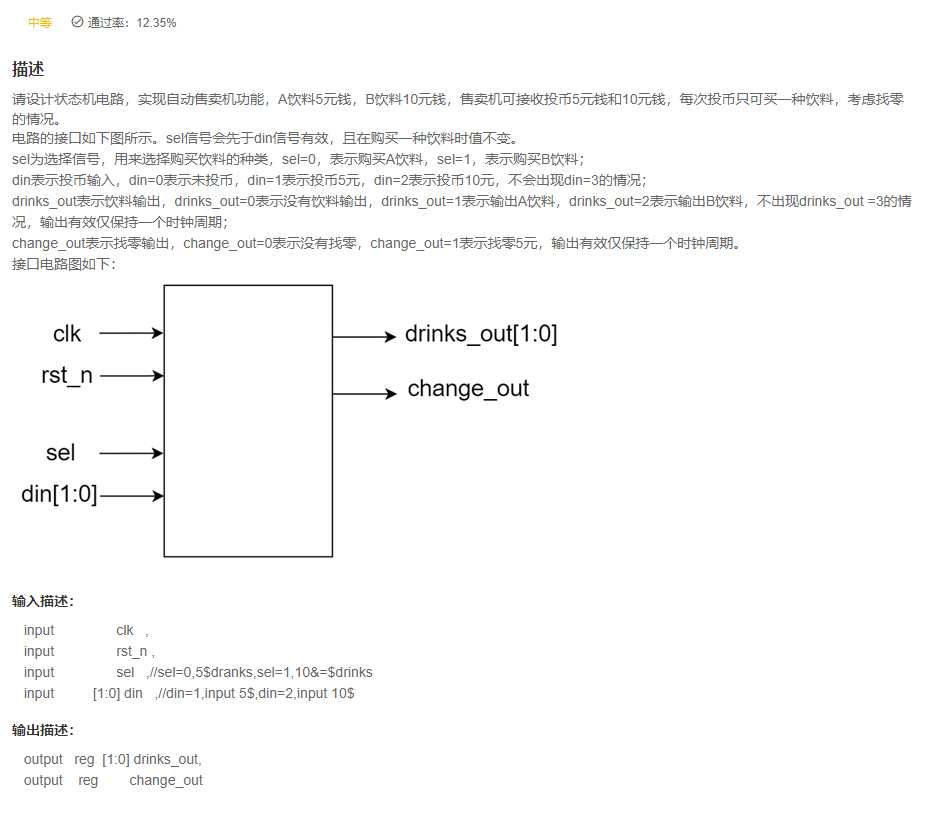
answer
`timescale 1ns/1ns
module sale(
input clk ,
input rst_n ,
input sel ,//sel=0,5$dranks,sel=1,10&=$drinks
input [1:0] din ,//din=1,input 5$,din=2,input 10$
output reg [1:0] drinks_out,//drinks_out=1,output 5$ drinks,drinks_out=2,output 10$ drinks
output reg change_out
);
reg [2:0] c_state,n_state;
parameter IDLE = 3'd0;
parameter S1 = 3'd1;//5 Yuan to buy 5 Yuan beverage
parameter S2 = 3'd2;//10 Yuan to buy 5 Yuan drinks 5 block
parameter S3 = 3'd3;//5 Ten yuan for drinks
parameter S4 = 3'd4;// added 5 block , Not looking for
parameter S5 = 3'd5;// added 10 block , look for 5 block
[email protected](posedge clk or negedge rst_n)
if(!rst_n)
c_state<=IDLE;
else
c_state <= n_state;
[email protected](*)
if(sel== 1'b0)begin
case(c_state)
IDLE:begin
case(din)
2'b00: n_state <= IDLE;
2'b01: n_state <= S1;
2'b10: n_state <= S2;
endcase
end
S1:begin
case(din)
2'b00: n_state <= IDLE;
2'b01: n_state <= S1;
2'b10: n_state <= S2;
endcase
end
S2:begin
case(din)
2'b00: n_state <= IDLE;
2'b01: n_state <= S1;
2'b10: n_state <= S2;
endcase
end
S3:begin
case(din)
2'b00: n_state <= IDLE;
2'b01: n_state <= IDLE;
2'b10: n_state <= IDLE;
endcase
end
S4:begin
case(din)
2'b00: n_state <= IDLE;
2'b01: n_state <= IDLE;
2'b10: n_state <= IDLE;
endcase
end
S5:begin
case(din)
2'b00: n_state <= IDLE;
2'b01: n_state <= IDLE;
2'b10: n_state <= IDLE;
endcase
end
endcase
end
else begin
case(c_state)
IDLE:begin
case(din)
2'b00: n_state <= IDLE;
2'b01: n_state <= S3;
2'b10: n_state <= S4;
endcase
end
S1:begin
case(din)
2'b00: n_state <= IDLE;
2'b01: n_state <= IDLE;
2'b10: n_state <= IDLE;
endcase
end
S2:begin
case(din)
2'b00: n_state <= IDLE;
2'b01: n_state <= IDLE;
2'b10: n_state <= IDLE;
endcase
end
S3:begin
case(din)
2'b00: n_state <= S3;
2'b01: n_state <= S4;
2'b10: n_state <= S5;
endcase
end
S4:begin
case(din)
2'b00: n_state <= IDLE;
2'b01: n_state <= S3;
2'b10: n_state <= S4;
endcase
end
S5:begin
case(din)
2'b00: n_state <= IDLE;
2'b01: n_state <= S3;
2'b10: n_state <= S4;
endcase
end
endcase
end
[email protected](*)
if(!rst_n)begin
drinks_out <= 0;
change_out <=0;
end
else begin
case(c_state)
IDLE:begin
drinks_out <= 0;
change_out <=0;
end
S1:begin
drinks_out <= 2'd1;
change_out <=1'd0;
end
S2:begin
drinks_out <= 2'd1;
change_out <=1'd1;
end
S3:begin
drinks_out <= 0;
change_out <=0;
end
S4:begin
drinks_out <=2'd2;
change_out <=0;
end
S5:begin
drinks_out <= 2'd2;
change_out <=1'd1;
end
endcase
end
endmodule

replay
- Give a failed code , It can be modified .
`timescale 1ns/1ns
module sale(
input clk ,
input rst_n ,
input sel ,//sel=0,5$dranks,sel=1,10&=$drinks
input [1:0] din ,//din=1,input 5$,din=2,input 10$
output reg [1:0] drinks_out,//drinks_out=1,output 5$ drinks,drinks_out=2,output 10$ drinks
output reg change_out
);
parameter IDLE = 2'd0;//0 element
parameter S1 = 2'd1;//5 element
parameter S2 = 2'd2;//10 element
parameter S3 = 2'd3;//15 element
// The first paragraph
reg [1:0] cur_state, next_state;
[email protected](posedge clk or negedge rst_n) begin
if(!rst_n) begin
cur_state <= IDLE;
end
else begin
cur_state <= next_state;
end
end
// The second paragraph
[email protected](*) begin
case(cur_state)
IDLE:begin
if(din == 2'b01)
next_state = S1;
else if(din == 2'b10)
next_state = S2;
else
next_state = next_state;
end
S1:begin
if(sel == 0)// buy 5 yuan
next_state = IDLE;
else if(din == 2'b01)
next_state = S2;
else if(din == 2'b10)
next_state = S3;
else
next_state = next_state;
end
S2:begin
next_state = IDLE;
end
S3:begin
next_state = IDLE;
end
default: next_state = IDLE;
endcase
end
// The third paragraph
[email protected](posedge clk or negedge rst_n) begin
if(!rst_n) begin
{
drinks_out,change_out} <= 3'b00_0;
end
else case(next_state)
IDLE:begin
{
drinks_out,change_out} <= 3'b00_0;
end
S1:begin
if(sel == 0)// buy 5 yuan
{
drinks_out,change_out} <= 3'b01_0;
else
{
drinks_out,change_out} <= 3'b00_0;
end
S2:begin
if(sel == 0)// buy 5 yuan
{
drinks_out,change_out} <= 3'b01_1;
else
{
drinks_out,change_out} <= 3'b10_0;
end
S3:begin
{
drinks_out,change_out} <= 3'b10_1;
end
default:{
drinks_out,change_out} <= 3'b00_0;
endcase
end
endmodule

VL62 Sequence generator

answer
`timescale 1ns/1ns
module sequence_generator(
input clk,
input rst_n,
output reg data
);
reg [5:0] data_reg;
[email protected](posedge clk or negedge rst_n) begin
if(!rst_n)
data_reg <= 6'b001011;
else
data_reg <= {
data_reg, data_reg[5]};
end
[email protected](posedge clk or negedge rst_n) begin
if(!rst_n)
data <= 1'b0;
else
data <= data_reg[5];
end
endmodule

replay
02 Hua W
VL63 Parallel string conversion
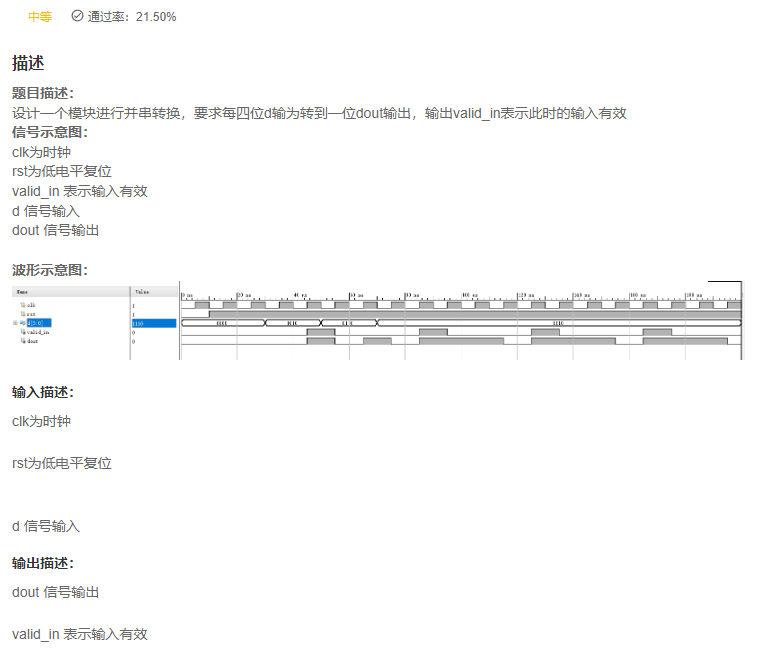
answer
`timescale 1ns/1ns
module huawei5(
input wire clk ,
input wire rst ,
input wire [3:0]d ,
output wire valid_in ,
output wire dout
);
//*************code***********//
reg [3:0] data = 'd0;
reg [1:0]cnt;// Count
reg valid;
assign dout = data[3];//data The highest bit of is connected to the output line
assign valid_in =valid;
always @(posedge clk or negedge rst) begin
if(!rst)begin
data<= 'd0;
cnt <= 'd0;
valid <= 'd0;
end
else begin
if (cnt == 'd3) begin
data <= d;//d Is in cnt It will be given when it is cleared data The uploaded
cnt <= 'd0;
valid <= 1;
end
else begin
cnt <= cnt + 'd1;
valid <= 0;
data <= {
data[2:0],data[3]};// Cyclic shift to the left
end
end
end
//*************code***********//
endmodule
replay
- Related topic recommendation 《 Niuke brush verilog》Part II Verilog Advanced challenges There is VL30 Data series to parallel circuit
- The core of this topic is , Read the title :
Shift output from high position,4 individual bit For a cycle . The concrete way is : Move the high position to the low position by cyclic left shift , Then use the characteristics of mutual deposit , Make the highest register output .
VL64 Clock switching
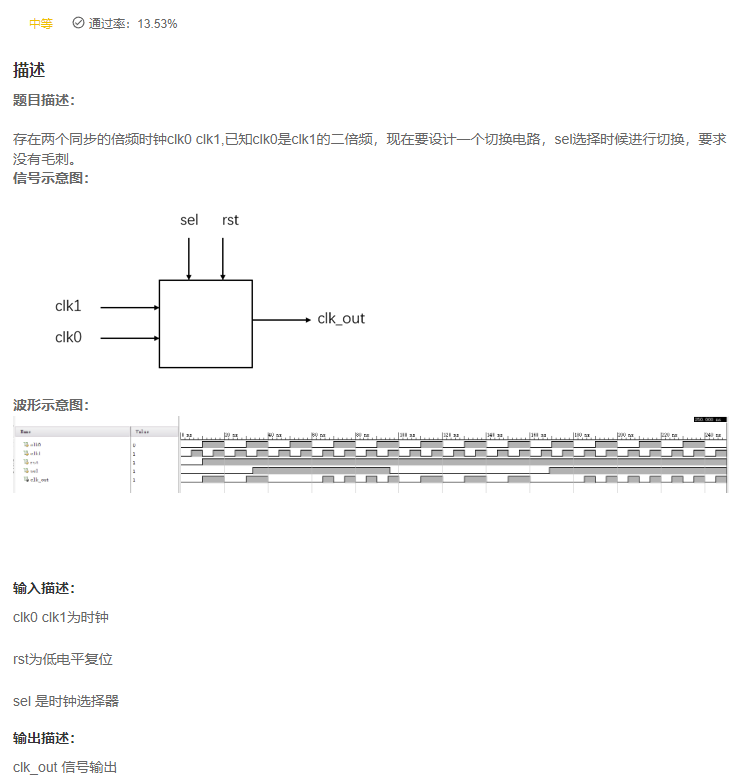
answer
`timescale 1ns/1ns
module huawei6(
input wire clk0 ,
input wire clk1 ,
input wire rst ,
input wire sel ,
output wire clk_out
);
reg q0, q1;
[email protected](negedge clk1 or negedge rst)
if(!rst)
q0 <= 0;
else
q0 <= ~sel & ~q1;
[email protected](negedge clk0 or negedge rst)
if(!rst)
q1 <= 0;
else
q1 <= sel & ~q0;
assign clk_out = (q0 & clk0) | (q1 & clk1);
endmodule
replay
- What's that? ?
VL65 State machine and clock frequency division
Title Description : Use state machine to realize clock frequency division , It is required to divide the clock by four , Duty ratio 0.25
Signal schematic diagram :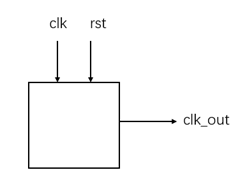
clk Is the clock
rst Reset for low level
clk_out Signal output
Ps The solution of this problem is based on 1000 State transition of , Not in this state , The compiler may report an error, but it does not affect .
Waveform diagram :
Input description :
clk Is the clock
rst Reset for low level
Output description :
clk_out Signal output
answer
`timescale 1ns/1ns
module huawei7(
input wire clk ,
input wire rst ,
output reg clk_out
);
//*************code***********//
parameter S0 = 'd0;
parameter S1 = 'd1;
parameter S2 = 'd2;
parameter S3 = 'd3;
reg [1:0] state;
[email protected](posedge clk or negedge rst)
if(!rst)
state <= S0;
else
case(state)
S0:state <= S1;
S1:state <= S2;
S2:state <= S3;
S3:state <= S0;
endcase
[email protected](*)
if(state == S1)
clk_out <= 'd1;
else
clk_out <= 'd0;
//*************code***********//
endmodule

replay
- The above state machine is a regular cycle , If the state condition is a single hot code , We
Whether shift can also be usedGet status . - The following answer is wrong , You can see that .
`timescale 1ns/1ns
module huawei7(
input wire clk ,
input wire rst ,
output reg clk_out
);
//*************code***********//
parameter S0 = 4'b0001;
parameter S1 = 4'b0010;
parameter S2 = 4'b0100;
parameter S3 = 4'b1000;
reg [3:0] state;
[email protected](posedge clk or negedge rst)
if(!rst)
state <= S0;
else
state <= state << 1;
[email protected](*)
if(state == S1)
clk_out <= 'd1;
else
clk_out <= 'd0;
//*************code***********//
endmodule
- What if you use a counter ?
`timescale 1ns/1ns
module huawei7(
input wire clk ,
input wire rst ,
output reg clk_out
);
//*************code***********//
reg [1:0] state;
[email protected](posedge clk or negedge rst)
if(!rst)
state <= 'd0;
else
state <= state + 1'b1;
[email protected](*)
if(state == 2'b01)
clk_out <= 'd1;
else
clk_out <= 'd0;
//*************code***********//
endmodule
VL66 Carry ahead adder
describe
Title Description :
Find two four bit data and write a four bit carry ahead adder , It is recommended to use sub modules
Tips : The bit formula of carry ahead adder is as follows
here ‘+’ ‘·’ The symbol is not ‘ Add ’ and ‘ ride ’, yes ‘ or ’ and ‘ And ’
Waveform diagram :
Input description :
A B The input values
Output description :
OUT Add the results
answer
replay
VL67 Hexadecimal counter
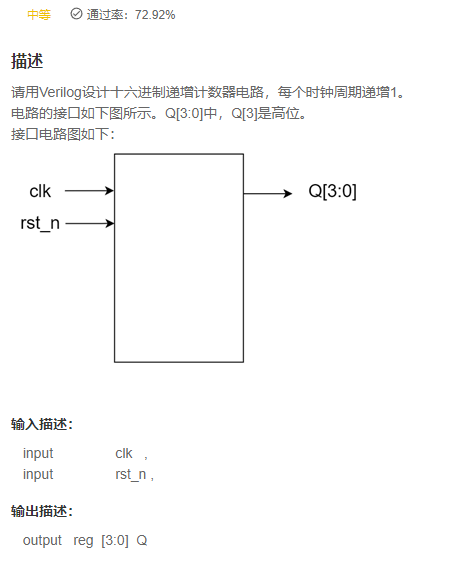
answer
`timescale 1ns/1ns
module counter_16(
input clk ,
input rst_n ,
output reg [3:0] Q
);
[email protected](posedge clk or negedge rst_n) begin
if(!rst_n)
Q <= 'd0;
else
Q <= Q + 1'b1;
end
endmodule
replay
- Can you spread anything ?
VL68 Sync FIFO
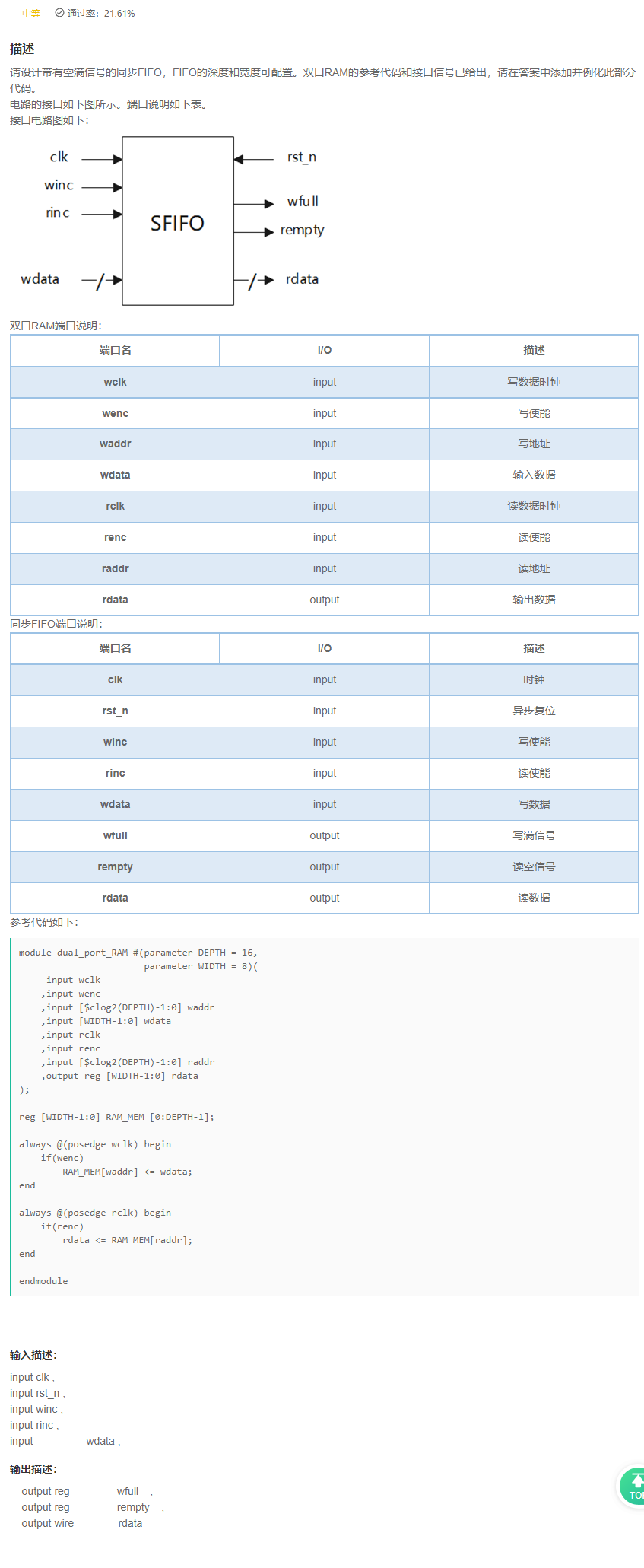
answer
`timescale 1ns/1ns
/**********************************RAM************************************/
module dual_port_RAM #(parameter DEPTH = 16,
parameter WIDTH = 8)(
input wclk
,input wenc
,input [$clog2(DEPTH)-1:0] waddr
,input [WIDTH-1:0] wdata
,input rclk
,input renc
,input [$clog2(DEPTH)-1:0] raddr
,output reg [WIDTH-1:0] rdata
);
reg [WIDTH-1:0] RAM_MEM [0:DEPTH-1];
always @(posedge wclk) begin
if(wenc)
RAM_MEM[waddr] <= wdata;
end
always @(posedge rclk) begin
if(renc)
rdata <= RAM_MEM[raddr];
end
endmodule
/**********************************SFIFO************************************/
module sfifo#(
parameter WIDTH = 8,
parameter DEPTH = 16
)(
input clk ,
input rst_n ,
input winc ,
input rinc ,
input [WIDTH-1:0] wdata ,
output reg wfull ,
output reg rempty ,
output wire [WIDTH-1:0] rdata
);
localparam ADDR_WIDTH = $clog2(DEPTH) - 1 + 1;
// Calculate the required bit width by depth , because fifo A flag bit is required at the highest bit to generate a full signal , Above again +1
// The second step : to RAM Declare the missing port signal
///
reg [ADDR_WIDTH:0] waddr,raddr;// Write the address , Read the address
wire wenc,renc;// Write enable signal , Read enable signal
// The third step : Write address operation , When to write
///
[email protected](posedge clk or negedge rst_n) begin
if(!rst_n) begin
waddr <= 'd0;
end
else begin
if(wenc) begin
waddr <= waddr + 1'b1;
end
else begin
waddr <= waddr;
end
end
end
assign wenc = winc && ~wfull;// Write enable signal
// Step four : Read address operation , When to read
///
[email protected](posedge clk or negedge rst_n) begin
if(!rst_n) begin
raddr <= 'd0;
end
else begin
if(renc) begin
raddr <= raddr + 1'b1;
end
else begin
raddr <= raddr;
end
end
end
assign renc = rinc && ~rempty;// Read enable signal
// Step five : Generate empty full signal
///
[email protected](posedge clk or negedge rst_n) begin
if(!rst_n) begin
wfull <= 'd0;
rempty <= 'd0;
end
else begin
wfull <= ((waddr[ADDR_WIDTH] != raddr[ADDR_WIDTH]) && (waddr[ADDR_WIDTH-1:0] == raddr[ADDR_WIDTH-1:0]));
rempty <= raddr == waddr;
end
end
// First step : Instantiated double port RAM
///
dual_port_RAM
#(
.DEPTH(DEPTH)
,.WIDTH(WIDTH)
)
dual_port_RAM_inst
(
.wclk (clk )
,.wenc (wenc )
,.waddr (waddr ) // Depth pair 2 Take the logarithm , Get the bit width of the address .
,.wdata (wdata ) // Data writing
,.rclk (clk )
,.renc (renc )
,.raddr (raddr ) // Depth pair 2 Take the logarithm , Get the bit width of the address .
,.rdata (rdata ) // Data output
);
endmodule
replay
- 《 Niuke brush verilog》Part II Verilog Advanced challenges There is synchronization in fifo And asynchronous fifo, This topic is completely consistent .
03 DJ
VL69 Pulse synchronizer ( Fast to slow )
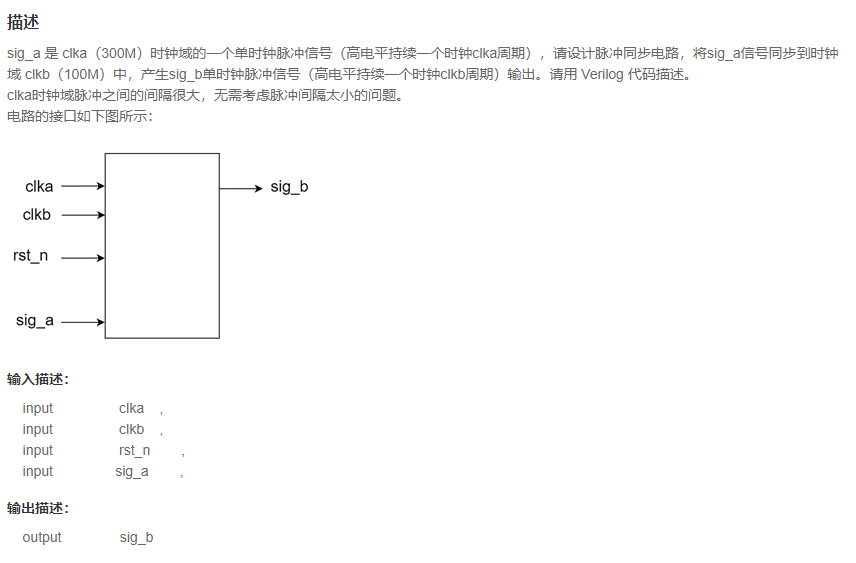
answer
replay
VL70 Sequence detector (Moore type )
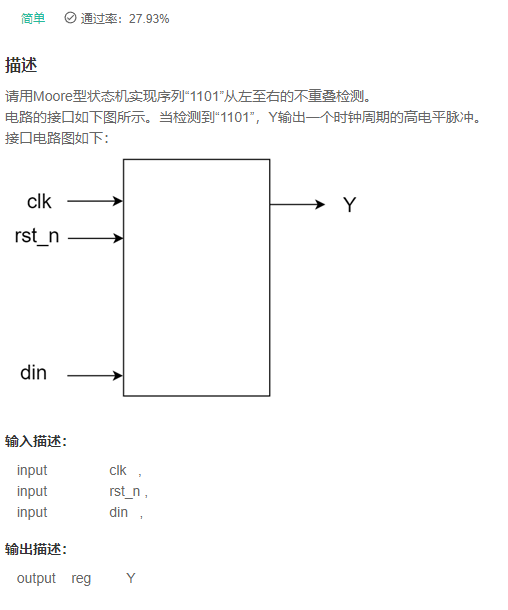
answer
`timescale 1ns/1ns
module det_moore(
input clk ,
input rst_n ,
input din ,
output reg Y
);
reg [3:0] din_reg;
[email protected](posedge clk or negedge rst_n)
if(!rst_n)
din_reg <= 'd0;
else
din_reg <= {
din_reg,din};
[email protected](posedge clk or negedge rst_n)
if(!rst_n)
Y <= 'd0;
else
Y <= din_reg == 4'b1101;
endmodule
replay
- 《 Niuke brush verilog》Part II Verilog Advanced challenges Many topics in , Xiaobian uses this method .
VL71 Multiplication and bit operation
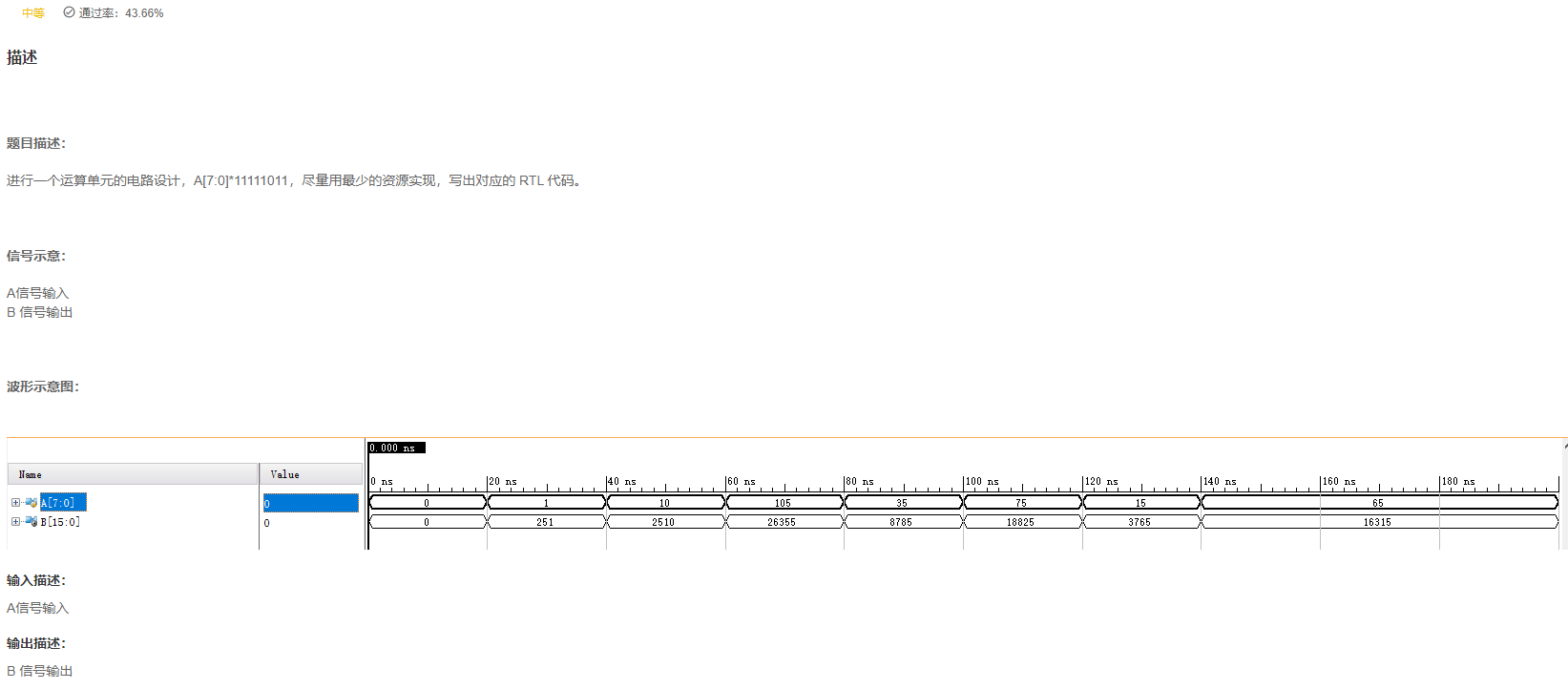
answer
replay
04 A in
VL72 Full adder
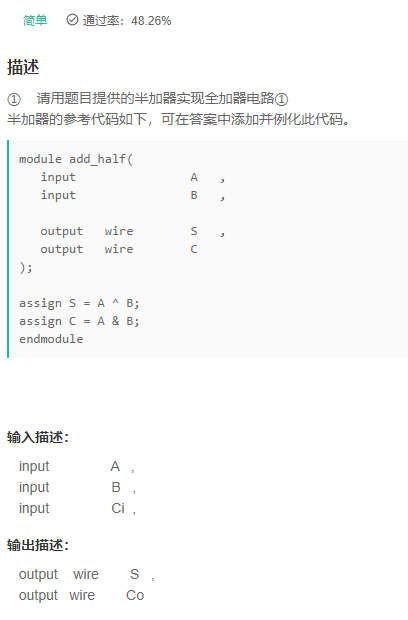
answer
`timescale 1ns/1ns
module add_half(
input A ,
input B ,
output wire S ,
output wire C
);
assign S = A ^ B;
assign C = A & B;
endmodule
/***************************************************************/
module add_full(
input A ,
input B ,
input Ci ,
output wire S ,
output wire Co
);
wire [1:0] s,c;
add_half add_half_U1(A,B,s[0],c[0]);
add_half add_half_u2(Ci,s[0],s[1],c[1]);
assign S = s[1];
assign Co = |c;
endmodule
replay

- At the beginning of study , Everyone should know ,
The half adder does not consider carry, But many people will definitely think , It seems that there is a carry , Like1'b1+1'b1 = 2'b10. Pay attention , The carry here refers to , stay1'b1+1'b1When considering the carry of the low order ? No, ! - The difference between half adder and full adder Mainly
The half adder has no input to receive carry, The full adder has a carry input , When adding two multi bit binary numbers , Except for the lowest bit , Each bit should consider the carry from the low bit , Half adder does not need to consider , Just consider the addition of two inputs . Half adderIt is a device that realizes the addition of two one bit binary numbers . It has two inputs ( Augend A And addends B) And output Y.Full adderIt is a combined circuit that adds two binary numbers and obtains the sum with a gate circuit , It's called a one bit full adder . A bit full adder can handle low carry , And output the standard addition carry . Multi bit full adders can be obtained by cascading multiple one bit full adders .
VL73 Serial carry adder
describe
② Please use full adder circuit ① Realize serial carry 4 Bit full adder circuit
1 The reference code of bit full adder is as follows :
module add_half(
input A ,
input B ,
output wire S ,
output wire C
);
assign S = A ^ B;
assign C = A & B;
endmodule
/***************************************************************/
module add_full(
input A ,
input B ,
input Ci ,
output wire S ,
output wire Co
);
wire c_1;
wire c_2;
wire sum_1;
add_half add_half_1(
.A (A),
.B (B),
.S (sum_1),
.C (c_1)
);
add_half add_half_2(
.A (sum_1),
.B (Ci),
.S (S),
.C (c_2)
);
assign Co = c_1 | c_2;
endmodule
Input description :
input [3:0] A ,
input [3:0] B ,
input Ci ,
Output description :
output wire [3:0] S ,
output wire Co
answer
`timescale 1ns/1ns
module add_4(
input [3:0] A ,
input [3:0] B ,
input Ci ,
output wire [3:0] S ,
output wire Co
);
// assign {Co,S} = A + B + Ci;
wire C[3:0];
generate
genvar i ;
for(i=0;i<=3;i=i+1)
begin: Li
if(i==0) begin
add_full add_full_li(
.A(A[i]),
.B(B[i]),
.Ci(Ci),
.S(S[i]),
.Co(C[i]));
end
else begin
add_full add_full_li(
.A(A[i]),
.B(B[i]),
.Ci(C[i-1]),
.S(S[i]),
.Co(C[i]));
end
end
endgenerate
assign Co = C[3];
endmodule
module add_half(
input A ,
input B ,
output wire S ,
output wire C
);
assign S = A ^ B;
assign C = A & B;
endmodule
/***************************************************************/
module add_full(
input A ,
input B ,
input Ci ,
output wire S ,
output wire Co
);
wire c_1;
wire c_2;
wire sum_1;
add_half add_half_1(
.A (A),
.B (B),
.S (sum_1),
.C (c_1)
);
add_half add_half_2(
.A (sum_1),
.B (Ci),
.S (S),
.C (c_2)
);
assign Co = c_1 | c_2;
endmodule

replay
- The full adder can also be realized without using the instantiated half adder
`timescale 1ns/1ns
module add_4(
input [3:0] A ,
input [3:0] B ,
input Ci ,
output wire [3:0] S ,
output wire Co
);
// assign {Co,S} = A + B + Ci;
wire C[3:0];
generate
genvar i ;
for(i=0;i<=3;i=i+1)
begin: Li
if(i==0) begin
add_full add_full_li(
.A(A[i]),
.B(B[i]),
.Ci(Ci),
.S(S[i]),
.Co(C[i]));
end
else begin
add_full add_full_li(
.A(A[i]),
.B(B[i]),
.Ci(C[i-1]),
.S(S[i]),
.Co(C[i]));
end
end
endgenerate
assign Co = C[3];
endmodule
module add_full(
input A,
input B,
input Ci,
output S,
output Co
);
assign S = A^B^Ci;
assign Co = ((A^B)&Ci)|(A&B);
endmodule
VL74 Asynchronous reset, synchronous release
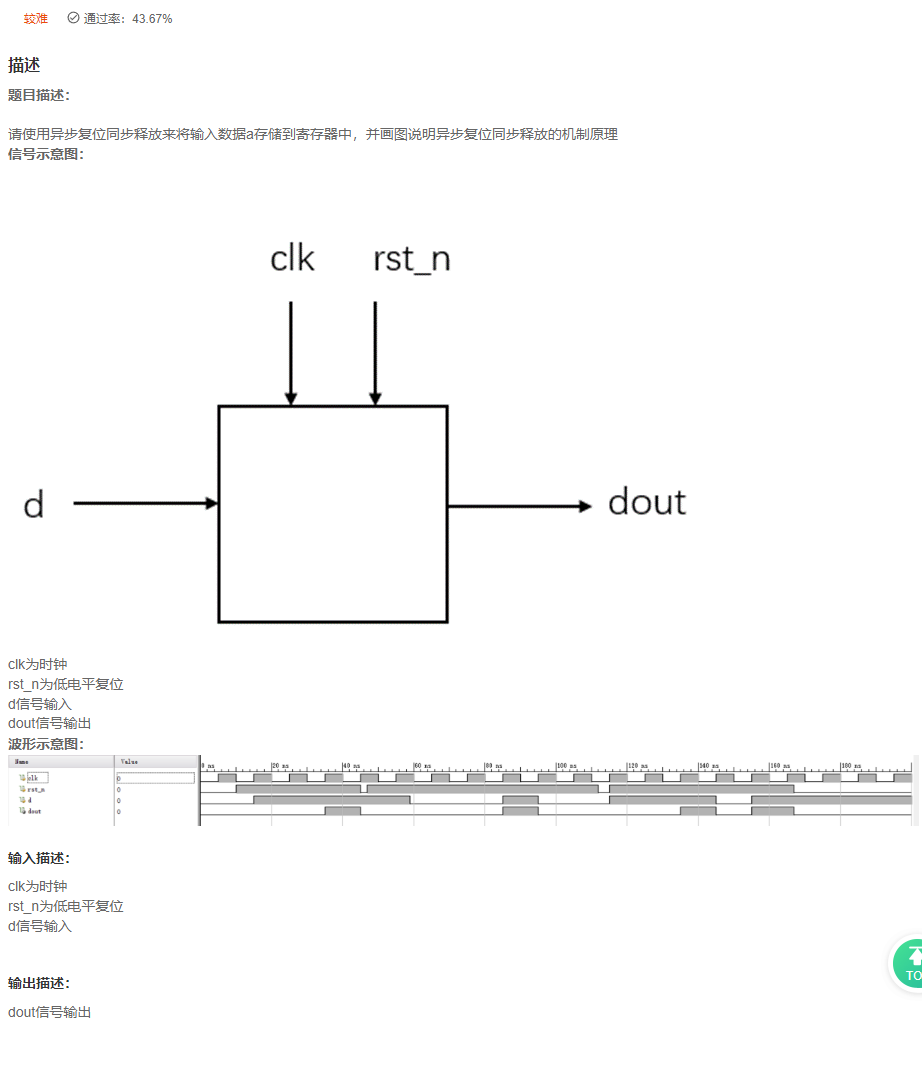
answer
`timescale 1ns/1ns
module ali16(
input wire clk,
input wire rst_n,
input wire d,
output reg dout
);
reg rst0,rst1;
always @ (posedge clk or negedge rst_n) begin
if (!rst_n) begin
{
rst0,rst1} <= 'd0;
end
else begin
{
rst0,rst1} <= {
1'b1,rst0};
end
end
always @ (posedge clk or negedge rst1)begin
if(!rst1) begin
dout <= 1'b0;
end
else begin
dout <= d;
end
end
endmodule
replay
- Asynchronous reset , Simultaneous release ?
VL75 Find the least common multiple
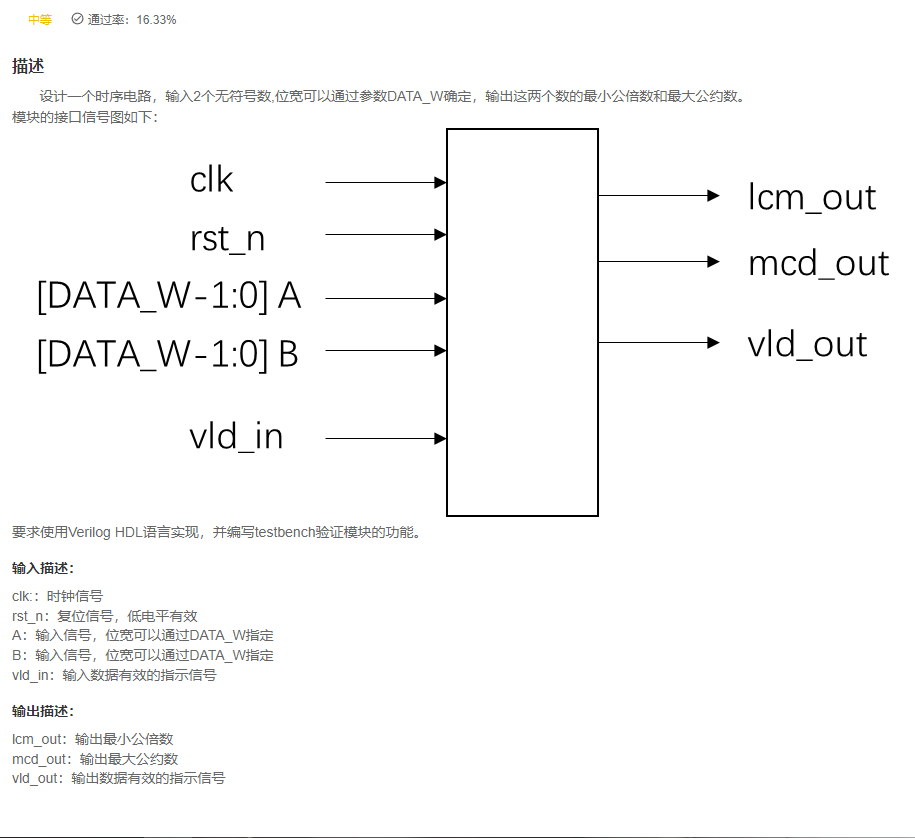
answer
VL76 Any odd multiple clock frequency division
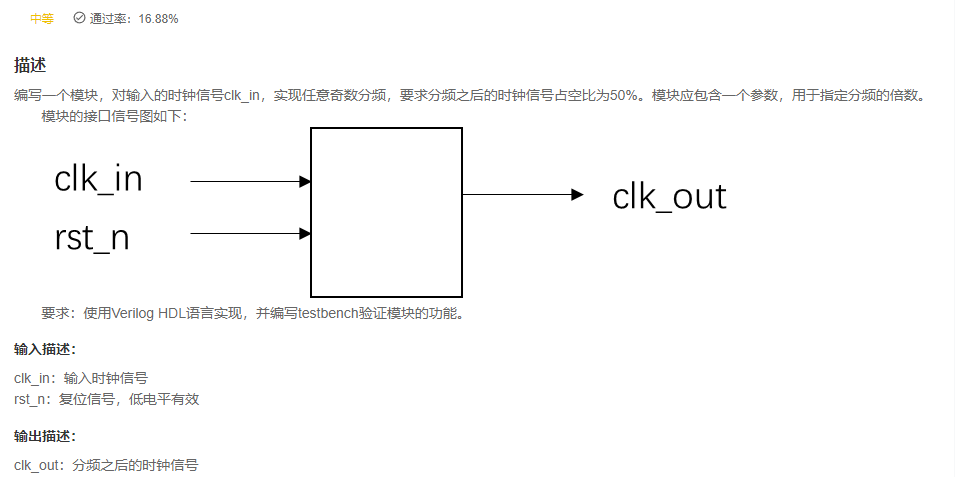
05 Z xing
VL77 Write multiplier algorithm expression
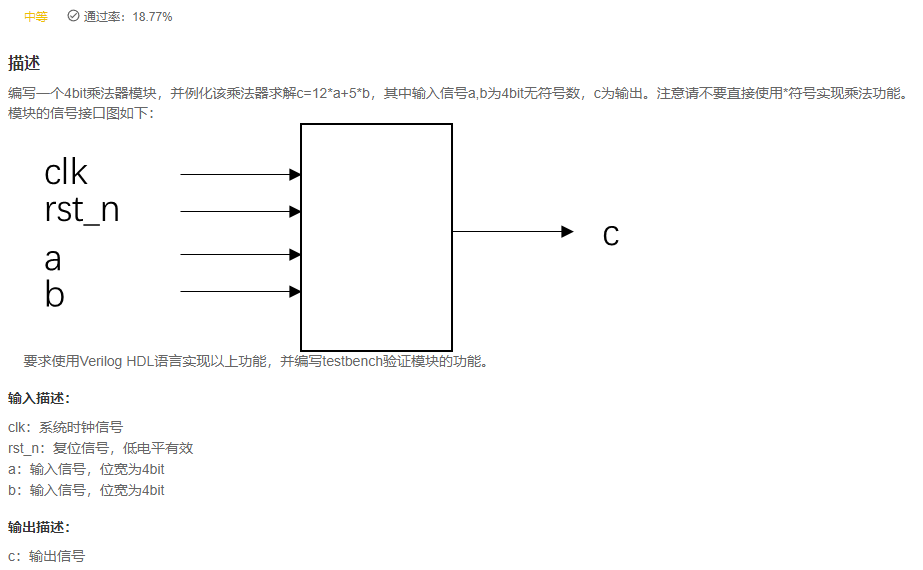
Postscript
Recommend related articles
- You can click the link to brush the questions with Xiaobian : Niu Ke brush questions

边栏推荐
- Object detection based on impulse neural network
- 424. The longest repeated character after replacement ●●
- Creative mode 1 - single case mode
- Multi sensor fusion of imu/ electronic compass / wheel encoder (Kalman filter)
- The PostgreSQL column reference 'ID' is ambiguous - PostgreSQL column reference'id'is ambiguous
- Why use weak pointers for delegation- Why use weak pointer for delegation?
- Judge whether the binary tree is a complete binary tree
- Rasa 3. X learning series -rasa 3.2.1 new release
- What is the process of building a website
- (4)UART应用设计及仿真验证2 —— RX模块设计(无状态机)
猜你喜欢
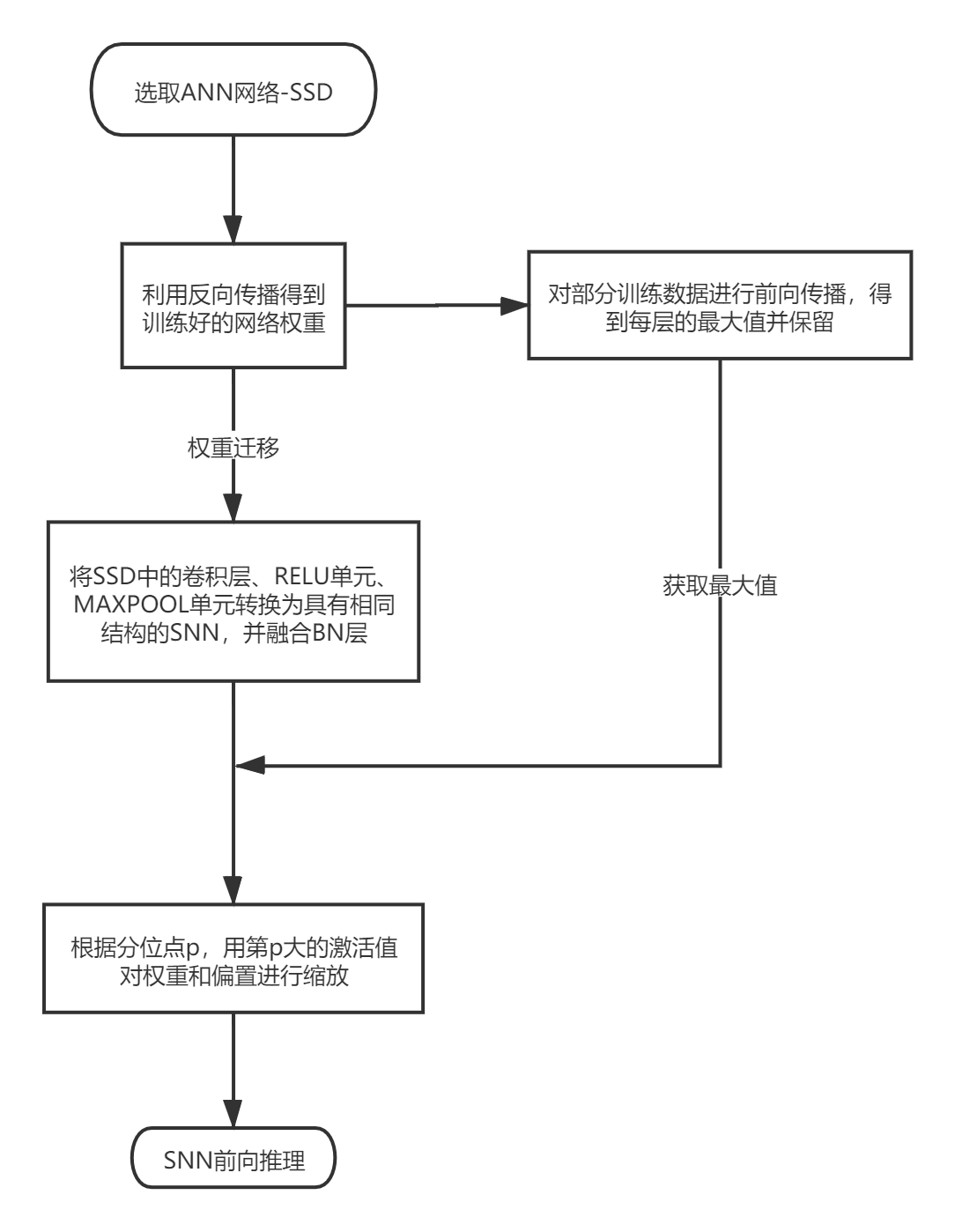
基于脉冲神经网络的物体检测
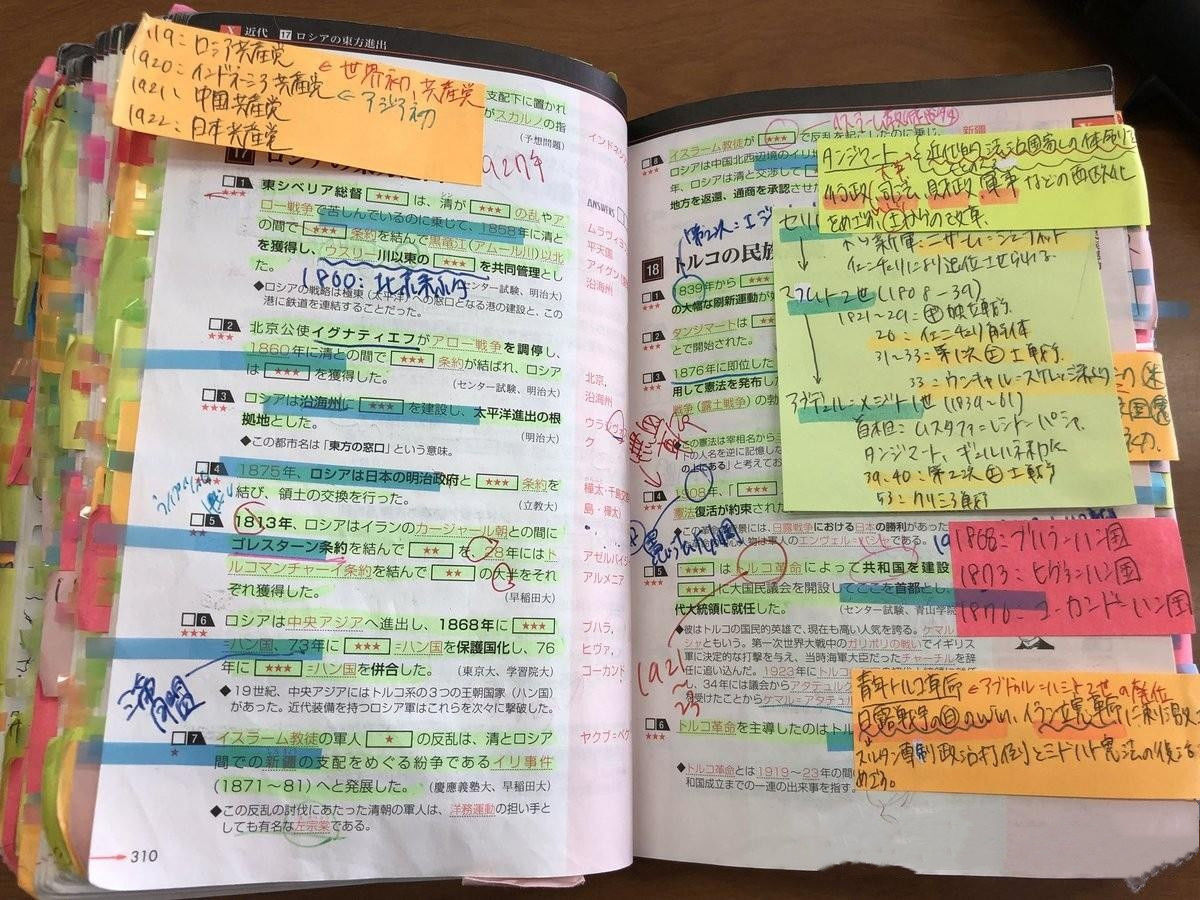
There are 14 God note taking methods. Just choose one move to improve your learning and work efficiency by 100 times!

动态规划 之 打家劫舍
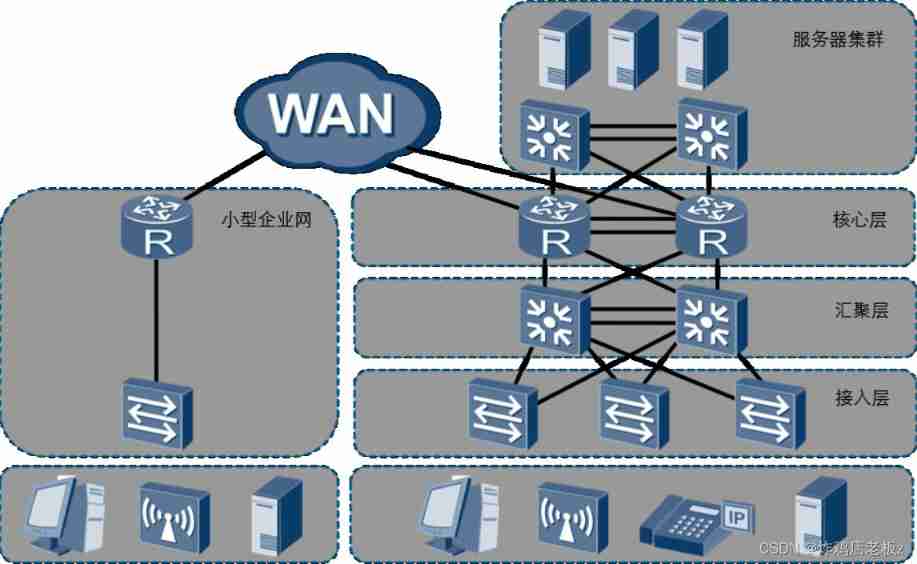
Hcip course notes-16 VLAN, three-tier architecture, MPLS virtual private line configuration
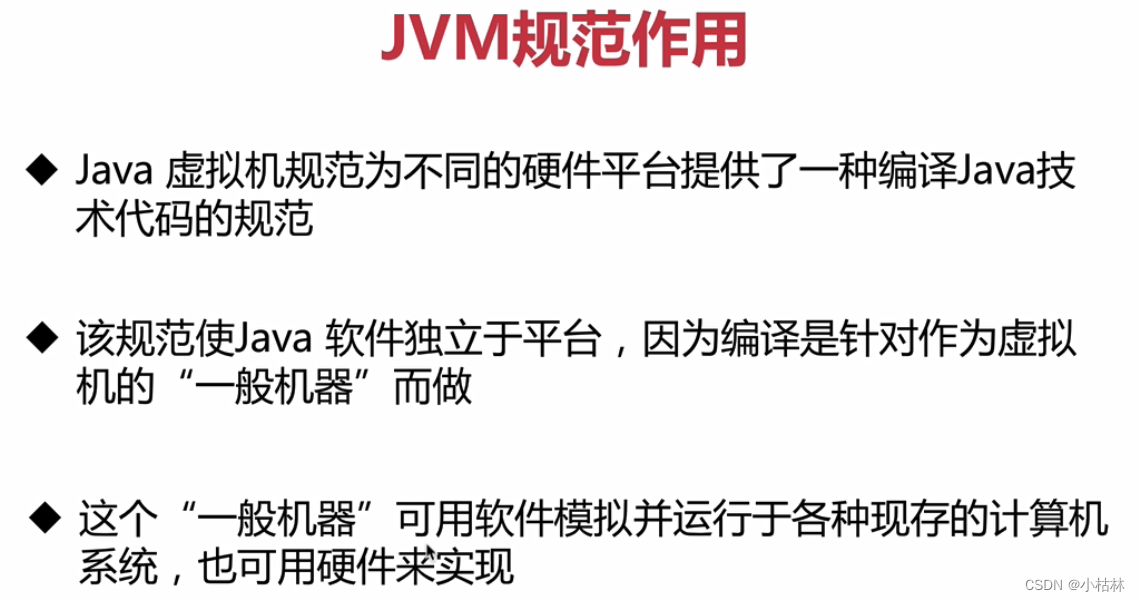
3:第一章:认识JVM规范2:JVM规范,简介;
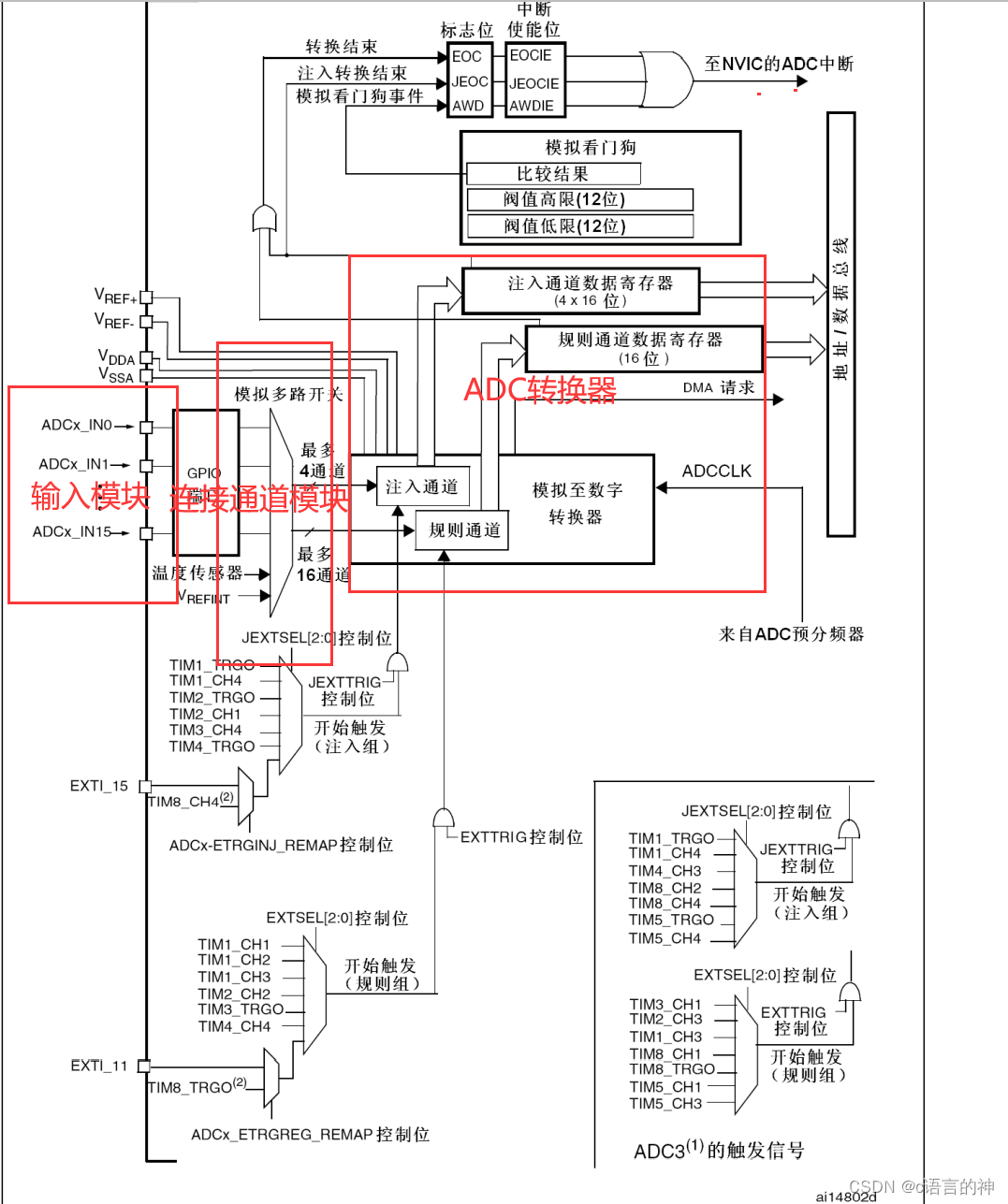
STM32__06—单通道ADC
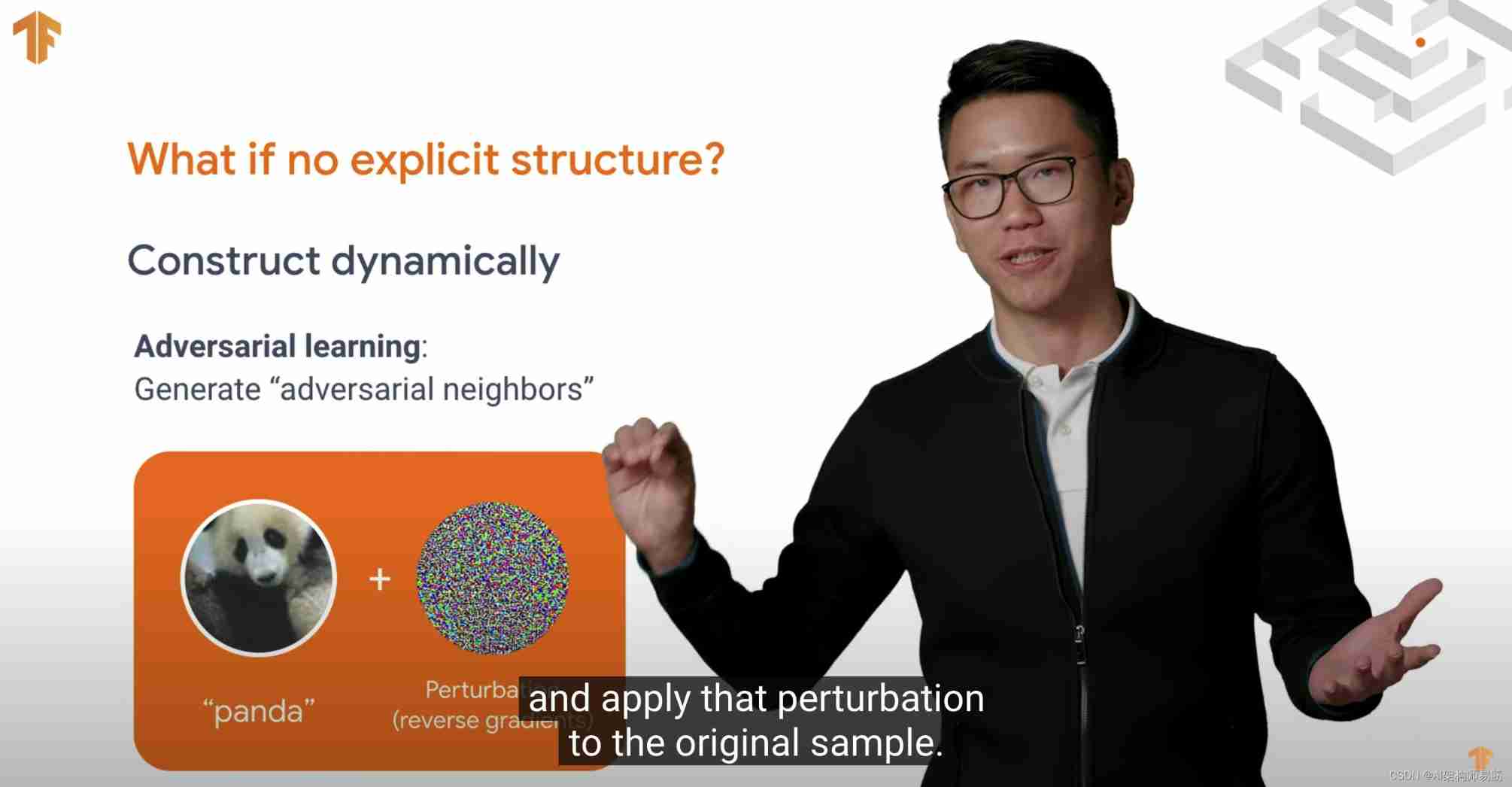
Neural structured learning 4 antagonistic learning for image classification

Debian 10 installation configuration

Rasa 3.x 学习系列-Rasa X 社区版(免费版) 更改

LabVIEW打开PNG 图像正常而 Photoshop打开得到全黑的图像
随机推荐
UVA11294-Wedding(2-SAT)
Latex multiple linebreaks
SpreadJS 15.1 CN 与 SpreadJS 15.1 EN
Huawei simulator ENSP - hcip - MPLS experiment
ts类型声明declare
yate. conf
MySQL (2) -- simple query, conditional query
UVA – 11637 garbage remembering exam (combination + possibility)
Idea connects to MySQL, and it is convenient to paste the URL of the configuration file directly
698. 划分为k个相等的子集 ●●
Initial experience | purchase and activate typora software
Leetcode sword finger offer brush questions - day 21
(4)UART应用设计及仿真验证2 —— RX模块设计(无状态机)
Neural structured learning 4 antagonistic learning for image classification
Différence entre hors bande et en bande
Golang code checking tool
TVS管 与 稳压二极管参数对比
Hcip course notes-16 VLAN, three-tier architecture, MPLS virtual private line configuration
How to design API return code (error code)?
Rasa 3. X learning series -rasa x Community Edition (Free Edition) changes
